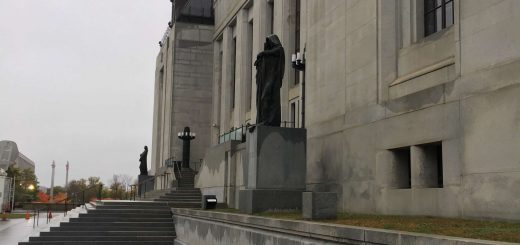Gomboc, Continued – Who Has the Power Over Your Personal Information?
Gomboc brought the issue of whether information gathered using a digital recording ammeter (DRA) to monitor power usage in a home could survive Charter scrutiny. However, beyond the section 8 questions raised in the case, the participation of the provincial utility company also raised some issues about the role third party companies can (and should) play in grow-op investigations.
As noted in our last post on the Court’s judgment, there was no clear consensus at the Supreme Court, with three very different reasons from different factions of judges. But the polemical positions taken on the issue of third parties could stimulate some interesting discussions in cases to come.
The Crown relied on the Code of Conduct Regulations, made pursuant to the province’s Electric Utilities Act, in support of their position that the accused’s section 8 rights were not violated. Under section 10(3)(f) of the Regulations, “customer information” can be collected by the utility company, and disclosed to police. Furthermore, the provision allows for this information to be disclosed “without the customer’s consent.”
Interpreting the Regulations
Trespassing on a homeowner’s property is conduct the police themselves are not permitted to engage in (see Kokesch, Evans), and I do not understand that the Regulations were intended, nor constitutionally able, to empower police agents to do what they themselves can not legally do. In my opinion, the Regulations do no more than permit the utility to share pre-existing customer information with the police unless the customer has objected. … If it were otherwise, the police could recruit any agency with limited access to a home to exploit that access to gather information for them. For example, the mailman to look into the windows while at the house delivering mail and report his observations; or the cable TV provider to report the viewing habits and preferences of the subscriber. Such unauthorized state surveillance of its citizens is offensive to the basic tenets of our society and would render the protection of a reasonable expectation of privacy over one’s home, illusory. [emphasis added]
The Canadian Civil Liberties Association (CCLA), which had intervener status before the Supreme Court, made its position on such invasions of privacy abundantly clear. In its factum, the CCLA argued that “an informed observer would conclude that exploiting third party access in such fashion is antithetical to any reasonable conception of privacy in a modern democracy.”
It is clear, then, that the issue of third party participation in police investigations was clearly before the Court. How did the highest court respond on this point?
No Consensus, But Plenty of Fodder
In addressing this particular issue, Deschamps J. (writing for Charron, Rothstein and Cromwell JJ.) accepts the Crown’s characterization of Enmax’s role as the “wholly voluntary cooperation of a potential crime victim.” She further notes:
The coercive undertones evoked by describing Enmax as being co-opted or conscripted are entirely inapposite to the case at bar. As noted above, if the police had merely notified Enmax of a potential electricity theft and the utility had proceeded on its own initiative to install a DRA and turn over what it disclosed, no Charter violation would have arisen.
In their dissenting reasons, Chief Justice McLachlin and Fish J. pick up on the significant policy arguments put forward by the appellate court in Gomboc. At they outset, they describe the access to information that individuals give to their mail carriers, electricity suppliers and Internet service providers as “both necessary and conditional: necessary, because we would otherwise deprive ourselves of services nowadays considered essential; and conditional, because we permit access to our private information for the sole, specific, and limited purpose of receiving those services.”
While Deschamps J. distanced herself from the language of conscription and co-option, and Abella J. sidestepped the issue, the Chief Justice and Fish J. describe the case as concerning “a police operation that co-opted an electric utility….”
The dissenting reasons also pour water on the idea that Gomboc’s failure to request an exemption from the provision of the Regulations should somehow result in the reduction of his privacy interest. They distinguish the case from Branch or Nolet, which concerned individuals in highly regulated fields such as securities or trucking. The Chief Justice and Fish J. noted:
The average consumer signing up for electricity cannot be expected to be aware of the details of a complex regulatory scheme – the vast majority of which applies to the companies providing services, and not to the consumers themselves – which permits the utility company to pass information on electricity usage to the police, especially when a presumption of awareness operates to, in effect, narrow the consumer’s constitutional rights.
The information, we reiterate once more, was gathered in response to a police request for assistance with a criminal investigation. It did not exist prior to the police action. In our view, the regulatory scheme should not be interpreted to authorize police agents to act in a manner forbidden to the police themselves.
Looking Beyond Gomboc
Which side made a more persuasive argument? It is difficult to say on an issue as muddy as this one. On a pragmatic level, I would say that I tend to agree with the two dissenting judges. I am fairly certain that most Canadians don’t spend an inordinate amount of time familiarizing themselves with the ins and outs of the regulatory schemes for their various service providers. To suggest that these regulations could diminish or vitiate the privacy interests of an individual strikes an uncomfortable chord.
Regardless of a debate over who is or isn’t more “right,” the decision in Gomboc highlights an issue that is often a part of section 8 Charter claims. It will be interesting to see how the Court deals with this issue in the future, now that the door to this line of legal argumentation has been opened — and, in view of the polemical reasons – left ajar.






Join the conversation